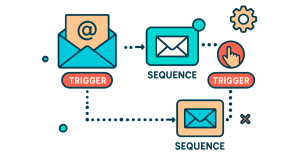While marketing automation software has the potential to change your life, it’s important to remember that the technology is not the “mythical magic marketing button” that so many marketers have been looking for all these years.
Implementing a successful marketing automation strategy requires a lot of preparation and planning. You’ve got to put in the hard work before the software starts automating your marketing process. But when it gets going, the real magic begins to happen.
The first step of any marketing automation strategy starts with an objective. What do you want your all-powerful marketing software to do? And there’s a lot it can do. Everything from email and social media marketing to landing page management, sales funnel communications, lead scoring, and a whole lot more.
Start with What You Know
Setting your first objectives probably has more to do with the available resources in your marketing operation than your ambitions for the technology. Unsurprisingly, according to recent research, most marketers (52%) are currently using their marketing automation technology to power their email campaigns. This isn’t surprising because, even to the layperson, marketing automation technology looks very similar to an email marketing platform on steroids.
Building email marketing drip campaigns based on simple workflows is a good place to start. Once you have your email templates, landing pages, and campaign content plugged into the system, your campaigns will pretty much look after themselves. This creates an opportunity to plan a more strategic path that utilizes your marketing automation to a great extent.
Then Grow
Your marketing automation platform is the perfect place to bring together your email, social media, and content marketing (blogging) strategies. These three low-cost marketing channels are often cited as the “holy trinity” of any content marketing strategy. To combine the efforts of these complementary channels and have a single view of the truth relating to how they work together to influence and assist each other makes perfect sense. This is also the ideal opportunity to truly coordinate the efforts of your email, social and content teams.
Taking the next step and incorporating all of your paid search, landing pages, and online forms into the fold becomes obvious for marketers who, probably for the first time in their careers, will start to develop a true understanding of their marketing return on investment. When you start breaking these marketing strategies out of their silos and sharing knowledge across the organization, a once competitive landscape becomes somewhere where everyone gets better and wins.
Then Try Something New
As your marketing automation strategy develops and grows, new opportunities will arise.
For example, SMS marketing offers an incredible opportunity to engage subscribers in an under-utilized environment. Not dissimilar to email marketing, SMS also has its own unique strengths.
The SMS inbox is a much more personal environment than email and, therefore, much more difficult to ignore. SMS is so hard to ignore; it is a powerful option for marketers sending essential communications — such as messages and campaigns relating to healthcare or financial services. With this said, it’s also an incredible technology for distributing promotional codes for restaurant and retail businesses.
Because SMS is a personal space, you’ll probably not want to hit it as frequently as you would an email address. However, the fact that SMS is so sparingly used is actually a major selling point of the platform — so don’t ruin it by flooding those inboxes.
Build a Better Sales Funnel
Marketing automation technology has incredible benefits for your organization beyond the marketing department.
Capabilities like lead scoring, which assigns a quality score to each subscriber based on their engagement with your email, social media, and blogged content, helps your sales team identify the hottest leads. This allows them to avoid wasting time speaking with lukewarm and cold leads and concentrate on closing deals.
Lead scoring can also be used by your account management and customer support teams to identify upsell opportunities and at-risk clients.
Integrating your marketing automation platform with your CRM system will also enable your management team to clearly understand how healthy your sales funnel is at any time and identify potential roadblocks in achieving your organization’s objectives. At the very least, this information will help the various departments in your organization assign budgets and resources.
Be Ambitious
It’s time to stop thinking of your marketing automation system as an advanced email marketing platform. It’s so much more than that.
When you invest in a strategy that utilizes your marketing automation platform to its full capability, it becomes a system that has the potential to optimize multiple areas of your business. This isn’t an easy task, but your investment in time and effort to build a complete strategy will be rewarded many times over.
Do you need help maximizing your opportunities from your marketing automation platform? Contact us at expert@emfluence.com.


